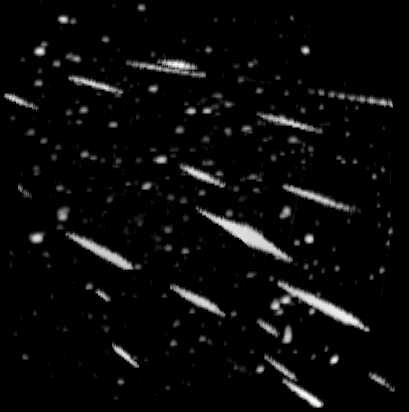
Leonids |


Leonids |


This image was obtained by Sirko Molau (Germany) using a video camera system during the 1995 outburst of the Leonid meteor shower. The long streaks are Leonid meteors, while everything else in the image are stars (note Orion in the lower right quadrant of the image). Although the video equipment used was very sensitive, the image does closely match photographs taken during the Leonid display of 1966, and might represent what the visual observer might see at any one moment during the Leonid peak of 1998 an d 1999.
Observer's Synopsis |
How to Observe |

History |
Orbit |
| AOP | AN | i | q | e | a |
|---|---|---|---|---|---|
| 173.1 | 235.4 | 161.0 | 0.983 | 0.901 | 9.956 |
| AOP | AN | i | q | e | a |
|---|---|---|---|---|---|
| 172.6 | 234.4 | 162.7 | 0.982 | 0.904 | 10.272 |
Other Interesting WWW Sites |